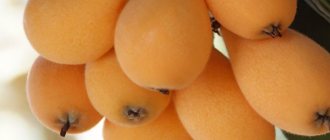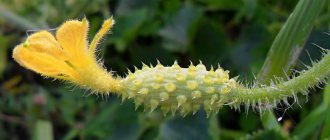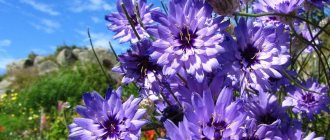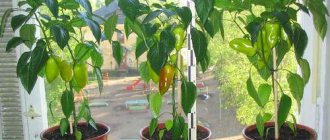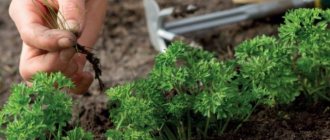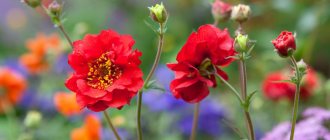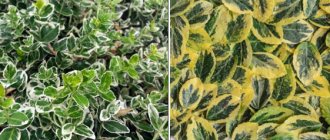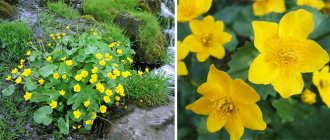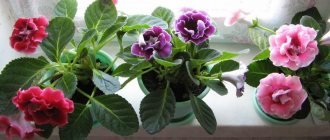Author: Ekaterina Pavlova
Kiwano is a heat-loving plant and prefers well-lit areas with light, moderately nutrient-drained soil. For normal growth and development of the plant, the optimal temperature is 21-26 degrees. It is unacceptable to grow kiwano in shaded areas or in areas with acidic soil.
Kiwano (African cucumber, horned or jelly melon) is a native of Southern Africa. This plant is often confused with the Antillean cucumber (anguria), which in appearance of the fruit is indeed very similar to the African cucumber. But the Antillean cucumber has leaves that resemble watermelon, and the heroine of our article has leaves similar to cucumber, but smaller.
What kind of fruit?
Kiwano, like the familiar cucumber, grows on a multi-branched vine. The fruit itself looks like either a small melon with needles, or a large yellow cucumber with huge pimples! The peel is thick, yellow, underneath it hides greenish juicy pulp, which is very similar to cucumber! The taste is interesting: the very juicy pulp has a sweet and sour taste, with hints of banana, cucumber, lime and melon. But each person has his own associations!
Previously, the fruit grew only in South America and Africa, but today it can be found in the Balkans and many countries of Western Europe.
Farmers love kiwano for its high immunity to most diseases, and not every pest will encroach on the destruction of a plot with this fruit. All this makes it possible not only to successfully diversify the table with exotic fruits, but also to spend a minimum of money and effort!
The downside of the African cucumber is its complete instability to frost, lack of growth with noticeable temperature fluctuations.
Useful properties of kiwano
Young ovaries at 4-6 days of age can be eaten fresh, in salads, successfully used for preparing not only sweet, but also spicy dishes, added to compotes and jams from fruits and berries, salted and pickled, like cucumbers. The product tastes very tasty and delicious. Kiwano, compared to cucumbers, contains much more substances beneficial to the body (organic acids, P-active substances, ascorbic acid, rare mineral salts).
The fruits of the African cucumber are used to treat gastrointestinal diseases, to improve cardiovascular activity, as a healing agent for cuts and burns, and in cosmetology. Yogurt with kiwano juice is very healthy because it contains a lot of potassium.
When ripe, the fruits increase significantly in size and can be stored at room temperature for up to 6 months. The pulp of ripe fruits is greenish in color, edible, and has a sweet and sour taste.
Is it possible to grow kiwano from seeds in Siberia and Russia?
When describing the plant, the phrase “not resistant to frost, does not tolerate temperature changes” immediately catches your eye, and you want to immediately give up the idea of \u200b\u200bgrowing an unusual fruit on your site. But any heat-loving fruit and vegetable can be grown in greenhouses, and everyone knows this!
A greenhouse is a costly business, so many people are interested in whether there is a variety of kiwano that would grow in open ground? Not long ago, the first ever domestic variety of African cucumber, which can be planted without a greenhouse, appeared in the State Register of Breeding Achievements! But gardeners in central Russia are encouraged to start growing by planting seedlings in April-May (the same time frame as for ordinary cucumbers).
We suggest further considering all the rules for growing kiwano from seeds at home.
What is kiwano and how is it eaten?
The annual crop from the pumpkin family, which is planted with seeds for seedlings, has several names: African, Antillean cucumber or anguria, horned, jelly melon, kiwano and others. A branched plant in the form of a vine with creeping climbing stems reaches 4-9 m in length. Thin shoots are faceted, fragile, with numerous tendrils. The leaves are large, 3- or 5-lobed, coarsely hairy. The weak root system is located close to the surface. Because of this, when growing kiwano at home, it is better to resort to mulching the soil rather than loosening it. Yellow female and male flowers are formed along the entire length of the stem in the axils of the leaves, blooming from morning to afternoon.
On one kiwano bush, up to 50-200 ovaries are created. Oval fruits are noticeable with large soft spikes, the size is close to an orange, they are 6-15 cm long. The weight of heterogeneous fruits is from 40 to 350 g, there are vegetables up to 480 g. The total harvest from one plant reaches up to 10 kg. Young kiwano fruits are covered with thick green skin with marbled patterns. As it matures, the color changes to yellowish and then orange. The jelly-like pulp is green, with numerous seeds.
Attention! It is better to eat the horned cucumber, which consists of 90% water, fresh, cutting it into two parts and scooping out the pulp with a spoon.
To taste, kiwano is suitable as a side dish for meat and seafood. The refreshing fruit is included in appetizers or dessert salads, combined with vegetable or fruit mixtures. Choose salt, lemon or sugar for dressing. Kiwano is widely used in cooking as an ingredient for compotes, jams, an additive to fermented milk products, and soft cheese. Tiny 3-4 day old vegetable gherkins with small seeds and fleshy spines are pickled and salted. Many people like fresh juice from horned cucumber as a drink that tones the immune and gastrointestinal systems.
Comment! A vigorous plant in favorable conditions quickly creates a continuous green screen.
Seed preparation and sowing
Before planting seeds, they must first be prepared. To do this, buy sodium humate or a fertilizer called “Epina Extra” at a gardening store and soak the seed for a day. Thanks to these procedures, the seeds are disinfected and saturated with useful substances, which gives faster and higher-quality seedlings!
Even if you live in the southern part of Russia, you cannot immediately sow seeds in open ground, because in the spring there may be serious temperature changes that will deprive you of your harvest. It is recommended to grow kiwano from seeds in any corner of Russia using the seedling method. Work must begin from the beginning of April until the end of the first ten days of May. From the moment the seeds are planted until the seedlings are planted in open ground, enough time will pass, the plant will get stronger and will be able to take root even at a temperature of +12 degrees, but not lower.
After soaking the seeds in the indicated substances, you need to wrap them in a gauze cloth, moisten them, and put them in a warm place for germination for 2-3 days. At the same time, you need to make sure that the cloth does not dry completely. This procedure is not mandatory, but still gives a great chance of high germination.
Growing kiwano from seeds is different from planting other plants. African cucumber needs a single container with a diameter of no more than 10 cm. Peat pots are ideal for this. The planting depth should not exceed 3.5 cm.
Harvesting
Try kiwano at all stages of ripening: from green to fully ripe fruit. Collect which ones you like best. If you only like ripe kiwanos, then at the end of summer, when the temperature at night drops below 12 °C, pinch off all the tops, tear off small ovaries and flowers, and take them to the compost. Cover the bushes with agrofibre; the remaining large fruits will still have time to ripen. But you can pick the kiwano at the very beginning of coloring. They will be stored until spring and gradually ripen. Frozen fruits cannot be stored.
If you prefer small greens, then collect them all summer before the cold weather arrives. But leave 1-2 fruits that set at the beginning of the season to ripen in order to collect seeds from them.
Video: tasting ripe kiwano
Kiwano fruits have no equal in potassium content, which makes it possible to recommend this crop for dietary nutrition to patients with cardiovascular diseases.
Sowing care
When growing kiwano, it is important to maintain the temperature within +25 degrees after sowing the seeds. Only minimal fluctuations are allowed, within two degrees! Maximum daylight is needed, but when seedlings emerge, the plant is shaded to avoid burns.
To speed up growth, you need to constantly keep the soil moist. The water should not stagnate for a long time, so you will have to frequently loosen the soil both before and after the emergence of seedlings.
Planting of horned melon in a permanent place occurs 4-5 weeks after sowing, and this depends on the development and condition of the seedlings. The plant must be completely healthy and strong, and night temperatures in the open air should not be lower than 10–12 degrees Celsius. At first, you will still have to place the plant under the film, so it will have a better chance of taking root.
Benefits of Kiwano
This fruit has a universal composition . It contains water, carbohydrates, proteins, fats, ash in different quantities. In addition, this fruit is rich in vitamins A, B, C, as well as macro- and microelements (iron, calcium, zinc, potassium, magnesium, manganese). Kiwano is considered a low-calorie product, so it is used for dietary nutrition.
What else is this fruit good for?
- This fruit completely provides the human body with nutrients that are extremely necessary during the winter. If you regularly include it in your diet, you can quickly strengthen your immunity.
- Due to the fact that the pulp contains a large amount of water, its balance in the body is maintained at the proper level. The high potassium content tones muscles and has the best effect on heart function.
- Although this horned melon tastes very sweet, it can be consumed by people suffering from diabetes. It is even recommended to include it in the diet for patients. Since this cucumber is low in calories, it can be consumed by people on a diet.
- People suffering from diseases of the digestive tract should consume kiwano juice. The fiber contained in the fruit is easily digestible, helps stimulate intestinal motility and removes toxic and harmful substances from the body.
Choosing a place
Growing kiwano from seeds is not as difficult as it seems, but you still need to follow generally accepted rules that allow you to achieve a good harvest:
- The plant is light-loving, but is afraid of direct sunlight. Under the crowns of bushes and trees, kiwano will develop slowly; more effort will be spent on the development of greenery, since it does very well in the shade! But we need a harvest, and not abundant green mass, so the priority is open, windless areas, shaded by a fence (it can even be a simple chain-link fence).
- To have more harvest and make it easier for you to collect it, place supports like for cucumbers.
- Kiwano does not tolerate crowding, it develops quickly and spreads, plant it only in a large area, without the proximity of other plants.
Plants must be planted at least 40 cm apart from each other. Usually, kiwanos are planted so that there are no more than two bushes per square meter.
Growing in open ground
The Green Dragon variety, adapted to the climatic conditions of the middle zone and Moscow region, was developed especially for greenhouses and open ground. The growing season is 75-85 days, it begins to bear fruit 60-65 days after the shoots appear, and is resistant to infections and insect damage. On the ridge, pollination is carried out by bees, but in the greenhouse you will have to pollinate with a brush.
Seeds for seedlings are sown 30-35 days before the seedlings are planted on the ridge, that is, in the last ten days of April or the first ten days of May. The seedlings are transplanted when night frosts stop and a constant positive daytime temperature is established. Most often, this time falls after June 5th.
How to grow seedlings:
- fill cups or pots with a volume of 500 ml and a diameter of 10 cm with universal soil for vegetable seedlings, disinfect it with a pink manganese solution 2-3 days before sowing;
- 12 hours before planting, soak the seeds in water or a growth stimulant, for example, sodium humate, Epin-extra;
- Plant one seed in each cup, deepening it 2-2.5 cm, lightly moisten the soil, cover with a lid and film;
- put in a warm, bright place where the temperature day and night is about 25 ° C;
- as soon as the shoots appear, remove the film, keep the soil moist (not wet), avoid direct sunlight on the plant, providing shading from the midday sun;
- 1.5-2 weeks before transplantation, start hardening - take it outside, onto the balcony.
Related article:
How to grow good seedlings of any vegetables
Rules for planting and care
Seedlings are planted on the ridge at the age of 30-35 days, when weather conditions permit. They are planted in the greenhouse 7-14 days earlier. For the first time, in any case, you need to build a temporary shelter from bad weather and low night temperatures.
The location is chosen in a sunny area, protected from the winds. The soil must not be acidic, otherwise it will have to be deoxidized. You can plant it near fences, houses, outbuildings, gazebos, but so that the structure does not block sunlight - in the shade and partial shade the vine grows poorly and may not bloom. If there are no buildings, then a support is installed.
Since kiwano grows strongly, no more than two vines are planted per square area.
Rules of care:
- Watering. Evaporation from the surface of the leaves is intense, moisture loss is large, so in hot weather they water every 2-3 days, in dry periods - daily. It is better to water in the morning or evening. Irrigation by sprinkling is not suitable - droplets of moisture lingering on a rough leaf can lead to burns.
- Weeding and loosening. The roots are located close to the surface, so you can’t loosen them deeply. Weeding is carried out simultaneously with loosening. In order not to loosen the soil once again, use mulching with chopped dry branches, dry grass, and humus. It is not recommended to mulch with fresh sawdust, since when they decompose they acidify the soil.
Related article:
How long do seeds last?
- Feeding. The fast-growing vine consumes a lot of nutrients, so it is fed every two weeks during the season. A good effect is obtained by alternating organic matter (mullein solution 1:5, bird droppings infusion solution 1:15, herbs infusion) and mineral fertilizers.
- Topping. If kiwano is grown as an ornamental crop, then pinching is carried out to give the vine the desired height and shape; if to obtain fruits, then almost all side shoots are pinched. The stem is pinched to the upper ovary, and the shoots with male flowers are cut off completely.
Further care
Growing kiwano from seeds, although similar to the process of caring for cucumbers, is still a little more complicated, since the plant is more capricious. You shouldn’t lose sight of a single detail; you need to follow all the rules of care so that the African fruit feels comfortable in the Russian area. Believe me, if you create the appropriate conditions, Kiwano will thank you with a rich harvest of juicy fruits!
- Watering. The fruit may be African, but you can’t arrange it in the tropics in the garden! On days with temperatures up to +25 degrees and partly cloudy weather, watering is done twice a week, but abundantly. If it is so hot that the ground begins to crack, then we water it every day in the evening, when the sun no longer burns, and also abundantly. It is advisable to purchase a soil moisture level meter so as not to overdo it with watering and not to dry out the soil.
- Weeding. Kiwano is demanding on the presence of minerals in the soil, and they are lacking in the presence of weeds. It is recommended to remove all weeds from African cucumber plantings, even small blades of grass.
- Loosening. Thanks to this procedure, the roots receive more oxygen. You only need to loosen the soil in the evening before watering or in the early morning before the sun rises. Procedures cannot be carried out during the day, as this leads to large evaporation of moisture.
Landing
In temperate climates, kiwano is grown by seedlings. If planted immediately in open ground, the plants will die during a sudden cold snap. Grown shoots can be planted in May, after the end of frost, in an area specially designated for exotic plants.
How to grow kiwano yourself:
- Preparation. During the day, the seeds are soaked in an aqueous solution of “Epin Extra” or succinic acid. This will speed up germination. The seeds must first swell. If they are collected from ripe fruit, they must be wrapped in cotton cloth and watered. The skin of the seeds will become soft, which means they are ready for planting.
- Germination. Seeds are planted in pots with a diameter of 10 centimeters with a nutritious soil mixture. Planting material is buried 3 centimeters into the soil and watered moderately. The pots are covered with film or glass. The soil should be moderately moist and loose. The optimal temperature for germination is 25°C.
- Planting in a greenhouse. Hatched seedlings with 2 true leaves are transplanted into a greenhouse. The process of growing seedlings before moving them into open ground takes approximately 31 days, of which up to 14 days in a greenhouse.
Planting in open ground is carried out only after the end of spring frosts. Temperatures lower than + 10°C are detrimental to kiwanos. The full growing cycle takes 75-77 days. Minimum temperature - from + 15°C. The plant does not tolerate temperatures below 0°C; seedlings will die in the soil.
Rules for planting in the ground:
- the area should be bright, protected from drafts and cold winds (the plant bears fruit well if it is in direct sunlight for at least 6-7 hours every day);
- kiwano grows poorly in shaded areas, acidic soils are not suitable;
- It is recommended to plant vines in 2 rows, at a distance of at least 1 meter from each other (you will need space for active growth of shoots);
- this is a climbing plant: you will need support in advance, on which the shoots are secured with twine (it is good to plant it near the fence as decorative landscaping);
- Drainage will be needed to prevent moisture from stagnating in the soil.
After planting in open ground, it is advisable to immediately tie the young vine to a support. If growing in a pot, you will also need a vertical stand. Kiwano is immune to most diseases that are dangerous to the pumpkin family. Since this is not an endemic plant, there is no need to worry about pest attacks.
For closed ground you will need a container with a volume of up to 20 liters. The liana can be placed on a balcony or insulated veranda.
Topping
If you grew cucumbers, you can also grow kiwano from seeds; cucumber is a cucumber in Africa too! And if you want to get a harvest from the plant, and not just decorative beauty, then pinching will be a mandatory step.
Remove excess side shoots, otherwise the green mass will kill the entire harvest. Form bushes in the same way as when growing ordinary cucumbers and tomatoes.
General information about the Kiwano plant
Origin, growth
Kiwano can be called a fruit only conditionally. In fact, kiwano is a vegetable from the pumpkin family. A relative of the common cucumber.
This exotic fruit grows in Central America, Israel, New Zealand and Southern Europe. Kiwano has an unusual appearance - the shape of an orange with soft pimples over the entire surface. The weight of the fruit is about 300 grams, the circumference is about 10 centimeters, the color is bright orange.
It grows on herbaceous vines, similar to cucumber vines, only with smaller leaves.
Kiwano is considered an unpretentious plant, resistant to diseases and various pests. Has good productivity. Reacts negatively to low temperatures.
INTERESTING! The original name of the kiwano "horned melon" comes from its bright, dense orange peel with spikes all over its surface. And the kiwano was nicknamed the “African cucumber” because of its green pulp, similar to a cucumber, with soft seeds.
Composition, calorie content and beneficial properties
Kiwano is a low-calorie product, its nutritional value is only 44 Kcal per 100 g, since it consists of 90% water.
The pulp of the exotic fruit is rich in vitamins A, C and group B. With its regular consumption, you can increase immunity and the body’s overall resistance to external factors. The presence of vitamins in the composition has a positive effect on the tonic function of the human body.
The beneficial properties of kiwano are due to the fact that kiwano contains folic acid, potassium, calcium, sodium, magnesium, phosphorus, iron, manganese, copper and zinc.
The presence of a large amount of potassium in kiwano has a beneficial effect on the normalization of diseases of the gastrointestinal tract and cardiovascular system.
REFERENCE! Kiwano is considered an environmentally friendly product due to its ability to not accumulate nitrates.
The rich composition of microelements has a positive effect on the condition of the skin, increasing its elasticity. Kiwano pulp is often used for cosmetic purposes, adding it to masks that have a tonic and firming effect.
In addition to the above, the pulp is used as a means of activating cell regeneration and promoting rapid healing of wounds and stopping bleeding.
Top dressing
It is necessary to fertilize the plant. For high yields, not only organic matter is required, but also mineral supplements.
From organic matter, it is ideal to water plants with herbal tincture (soak the weed until fermentation, then dilute it with water 1/1), tincture of bird droppings and mullein. As for mineral treats for plants, give preference to complex fertilizers developed for fruits, berries and vegetables: “Signor Tomato”, “Aquarin”, “Kristalon”, “Azofoska” and so on.
To prevent the plant from starving, it needs to be watered with fertilizers at least once every 10 days. If the soil is poor, then once a week. Alternate watering with organic matter and mineral fertilizers.
Kiwano: what is it, growing African cucumber from seeds, reviews and photos
Kiwano attracts with its exoticism and ease of cultivation. In Russia, a variety has been developed that is zoned for all regions. Seeds are available for free sale. So why not grow this African fruit in your own garden?
Description of Kiwano, purpose of the fruit
Other names for kiwano are African cucumber and horned melon. This culture is not new; it comes from Africa and is popular in Israel and New Zealand. It grows there wild, like a liana. It is not known in what year it came to Russia, but a description of the fruit can be found in books published in the 60s of the last century, and, probably, even earlier.
Kiwano grows in the wild, its vines spread along the ground or climb trees
Commercial success came to this exotic in the 1980s. It began to be grown and exported by farmers in New Zealand. Today, kiwano is grown on an industrial scale in Australia, Chile, the USA, Germany, Italy, and China. The fruits are supplied to almost all major supermarkets in the world. They have become fashionable here in Russia too.
Kiwano can be found among the exotic fruits in the supermarket.
The word Kiwano in each country has its own special spelling: Kewana, Kiwano, etc. Therefore, there are discrepancies in the Russian language.
Kiwano belongs to the pumpkin family; its growth pattern is very similar to a cucumber. It forms a long lash with stepsons, there are male and female flowers, the leaves are similar to cucumber, only smaller. Only the fruits are strikingly different. In Kiwanos, from the moment the ovary forms, they look like hedgehogs and are covered with spines.
Kiwano ovary just starting to grow
The kiwano fruit is cylindrical and grows to the size of an orange. When fully ripe it turns yellow-orange, but the flesh inside remains green. The consistency of it resembles jelly, all dotted with seeds. Taste: from ordinary cucumber to sweet multifaceted, similar to a mixture of exotic fruits (kiwi, pineapple, orange, banana).
Both 5-7-day-old greens and already ripe fruits are collected for food. Zelentsy are used like regular gherkin cucumbers: pickled, added to assorted dishes and pickles. Ripe kiwanos are cut in half and the pulp is eaten with a spoon. The pulp is also suitable for making jam, as well as cocktails with the addition of yogurt or honey. The fruits are stored at room temperature for up to 6 months.
Ripe kiwano is cut in half lengthwise or crosswise and the pulp is eaten with a spoon.
Kiwano is a record holder for potassium content, therefore it is recommended for those who suffer from cardiovascular diseases. In addition, freshly squeezed juice improves tone and strengthens the immune system. The rough skin is also eaten, it is rich in fiber and vitamin C. Another use you might like is to use the pulp-free shells as bowls to effectively serve salads.
Empty kiwano halves are used to decorate dishes.
Varieties and types of Kiwano
In 2006, employees of the Central Siberian Botanical Garden (Novosibirsk) registered the Green Dragon Kiwano they bred in the State Register of Breeding Achievements. It is zoned for all regions of the Russian Federation. Can be grown in open and closed ground.
The Siberian exotic grows a lash 3 m long. 75–77 days pass from emergence to harvest. The fruits are oval, yellow, with tubercles and pubescence. The length of each is 6.5-8 cm, weight - 145-158 g. The taste is called good. Green dragon has a stable yield. 3.6 kg of fruit grows per 1 m² of bed.
Kiwano Siberian selection Green Dragon
The State Register does not say anything about disease resistance, and the opinions of gardeners on this issue are divided. Some claim that the Green Dragon does not get sick, while others say it dies from powdery mildew.
It is interesting that only this variety is known in Russia. On international portals, Kiwano varieties are not mentioned at all; even on Amazon there is only one variety - Kiwano Cucumis melo, that is, all the botanical names are collected together - kiwano, cucumber (cucumis), melon (melo).
The Latin name for kiwano is Cucumis metulifer. Cucumis is the name for a cucumber that was grown in ancient Egypt, metulifer refers to the thorns.
https://www.youtube.com/watch?v=kC8Tz_dvipA
The Cucumis metulifer family includes 32 species, but only two are of commercial interest and have been domesticated and grown far beyond their native Africa. These are Cucumis metuliferus (kiwano) and Cucumis anguria, already known to us.
The fruits of Cucumis anguria are similar to kiwano, but have obvious differences
In our local stores you can find Green Dragon Kiwano seeds, as well as bags labeled "Kiwano" or "African Cucumber", without the name of the variety or species.
If there are none in your city, order online. Kiwano is sold in online stores: “Gavrish”, SeedsPost (Seeds by mail), etc.
And of course, the seeds can be collected from a fruit purchased in a supermarket, but it must be fully ripened.
Kiwano seeds are available for free sale and are produced by well-known agricultural companies
Sowing Kiwano
Kiwano is grown through seedlings. Sow the seeds a month before planting in a permanent place. The culture does not tolerate frost, the optimal temperature for growth is +20... +26 °C, at +12 °C development stops. Therefore, it should be planted in open ground at the end of May - beginning of June, when warm weather sets in, and in a greenhouse or greenhouse - earlier, in early to mid-May.
: collecting kiwano seeds, sowing, seedlings
Kiwano is not as demanding on soil fertility as cucumber. The main thing is that the soil is loose, light and permeable.
Use this exact one for growing seedlings: buy it or make it yourself from humus, garden soil and baking powder (perlite, vermiculite, coconut fiber) in a ratio of 1:1:0.5.
Sow to a depth of 2–3 cm in pots with a diameter of 8–10 cm. You can pre-soak the seeds in aloe juice or Epin solution (2 drops in half a glass of water).
Kiwano seedlings are no different from cucumber seedlings, they look the same, they prefer a warm and bright place, however, they do not tolerate direct sunlight. Keep the soil constantly moist, but not soggy. No fertilizing is needed during the seedling period.
Kiwano seedlings are similar to cucumber
Features of planting in a permanent place, care
By the time of planting, kiwano plants should have 2-3 true leaves. The bushes grow very much, you can collect a bucket of fruit from each. Therefore, it is not worth planting many plants for one family; an aggressively growing vine will take up a large space and can strangle other cultivated plants with its lashes. Planting density - 2 bushes per 1 m².
: how does one kiwano bush grow in open ground
Grow kiwano spread or with a vertical garter. This plant is great for landscaping walls and fences. Flowering does not begin until a large green mass has grown.
Throughout the summer you will be required to:
- Watering 2-3 times a week.
- Fertilize every 10–14 days with complex fertilizer for cucumbers, zucchini and pumpkins (BioMaster, BioHumus, Fertika, Agricola).
- Formation into one stem. Pinch out the stepsons (side branches) after the ovaries appear on them, leaving 2-3 leaves behind. And if there is only a male barren flower on the shoot, then break it out entirely.
Kiwano requires pollination by insects, so it is more productive in open ground. In the greenhouse, you will have to work as bees yourself and pollinate by hand, picking the male flower and dusting it with pollen from the female stigmas.
The female Kiwano flower, the male one does not have an ovary rudiment near the base
Harvesting
Try kiwano at all stages of ripening: from green to fully ripe fruit. Collect which ones you like best.
If you only like ripe kiwanos, then at the end of summer, when the temperature at night drops below 12 °C, pinch off all the tops, tear off small ovaries and flowers, and take them to the compost. Cover the bushes with agrofibre; the remaining large fruits will still have time to ripen.
But you can pick the kiwano at the very beginning of coloring. They will be stored until spring and gradually ripen. Frozen fruits cannot be stored.
If you prefer small greens, then collect them all summer before the cold weather arrives. But leave 1-2 fruits that set at the beginning of the season to ripen in order to collect seeds from them.
Reviews about growing kiwano
Even a child can grow a Kiwano. The fruits, despite their African origin, ripen in the open ground of any region of the Russian Federation. The main concern will be finding seeds and choosing a place to plant the wildly growing vine.
- Marina Volkova
Source: https://dacha.help/ovoshchi/ekzoticheskoe-rastenie-kevano-opisanie-kak-vyrastit-naznachenie
When to harvest?
You can tell by the apples when it’s time to pick them from the branches, but what about the kiwanos? Growing African cucumber from seeds begins in April or early May, but the season ends in August. The fruits are ready for harvesting when they acquire a rich yellow color, like the Kolkhoznitsa melon. But at this time their taste is bad, reminiscent of overgrown cucumbers, but the fruits store well. To fully experience all the delicious flavors of kiwano, wait until the fruit turns a rich orange color! In this state, the fruit can be stored for no more than 6 months, and only underground, since the fruits cannot be frozen or even simply stored in the refrigerator!
Botanical description of Kiwano
Recently, a new edible crop from the pumpkin family, kiwano, has appeared in the assortment of Russian summer residents. I have been growing this wonderful plant in a greenhouse at my dacha for two years now and am very satisfied with the results.
African cucumber is an annual dioecious plant of the pumpkin family, with a growing season from germination to fruit ripeness of 75-86 days.
The taste of the pulp is reminiscent of lemon and pineapple with a pronounced melon aroma. The shelf life of ripened fruits is up to 6 months after picking. Productivity up to 4 kg per m².
How can the African cucumber be attractive to us summer residents? The original, unusually productive crop is distinguished by its high endurance and resistance to pests and diseases. A fragile climbing vine with a thin grooved stem reaches up to 5 m in length. The leaves are smaller than those of a cucumber, but resemble them in shape.
The roots of kiwano are superficial, poorly developed, the flowers are small, yellow, and numerous. Due to shallow and undeveloped roots, it is not recommended to loosen the soil around the plants; it is better to mulch the soil to preserve moisture. The fruits are on long stalks, green, oval, the size of a goose egg, tuberculate.
Ripe fruits are yellow and attract with a beautiful carved pattern. The fruits of some varieties have large tubercles with dark, non-prickly spines.
The seeds are small, flat, enclosed in juicy pericarp, cream-colored when ripe, and remain viable if properly stored for up to 8 years.
